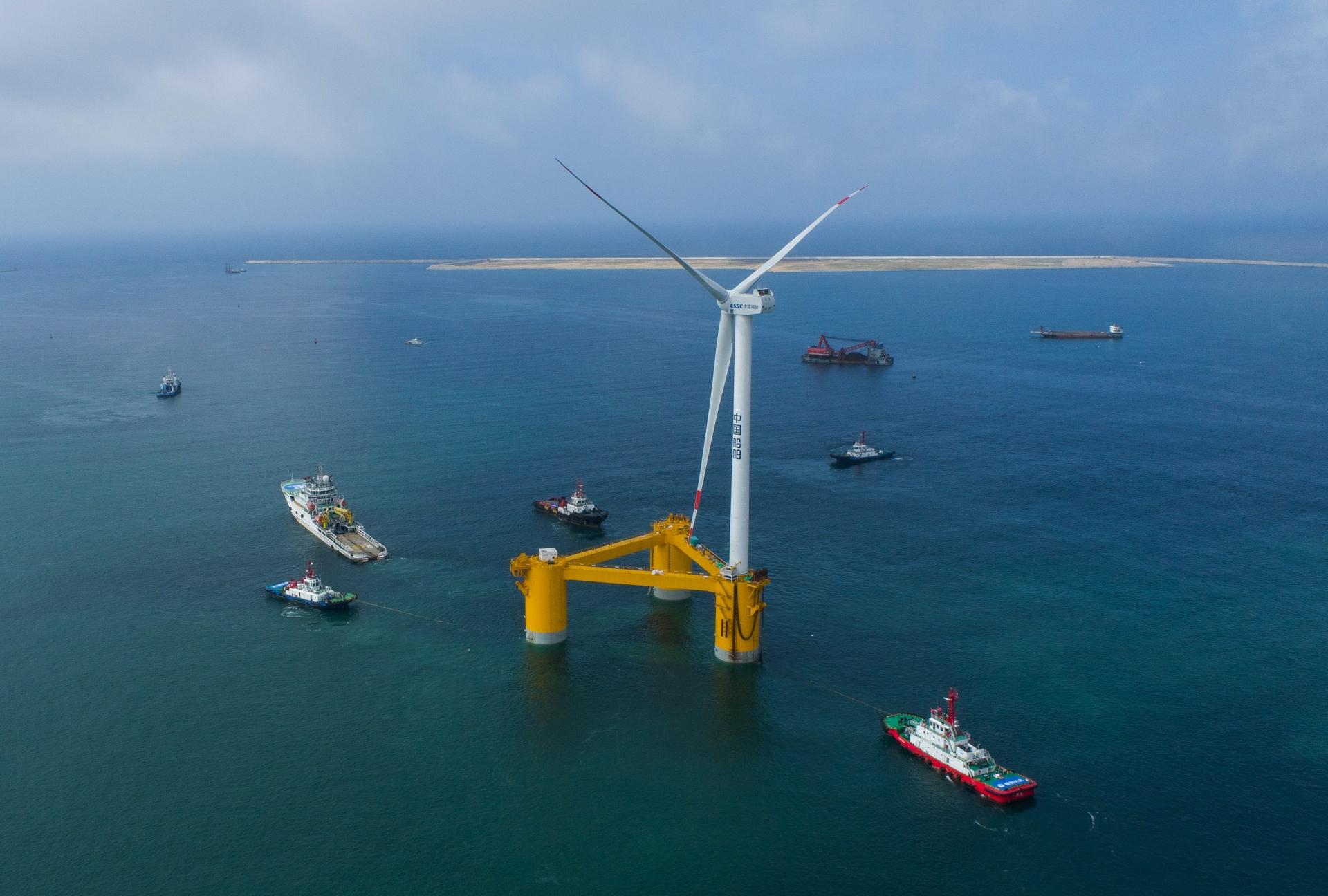GUANGZHOU, June 28 (Xinhua) -- Erected on sea water, arrays of photovoltaic panels glow in the sun while fishers paddle in the interspace.
This is not a plot in science fiction movies, but an actual scene in Haiyan Township, Jiangmen City, south China's Guangdong Province.
As a manufacturing heartland and leading foreign trade province, Guangdong accounted for 10.9 percent of China's GDP last year, with only around 7 percent of the country's energy consumption, according to the National Bureau of Statistics.
RENEWABLE ENERGY DEVELOPMENT
At the end of 2021, the first phase of a 500-megawatt solar power project was launched in the township. The photovoltaic panels above sea water generate electricity, while the water area is used for aquaculture.
Once completed, the project, with a total investment of around 2.2 billion yuan (about 329 million U.S. dollars), will provide 543 million kWh of clean electricity annually, according to Chen Lan, vice general manager of Guangdong Electric Power Design Institute.
He added that the project can save 193,000 tonnes of standard coal and reduce about 534,000 tonnes of carbon dioxide emissions each year, compared with conventional coal power plants.
This is the epitome of the construction boom of offshore wind and solar power facilities along the over 4,000-km coastline in Guangdong. In 2021, the province added 5.49 gigawatts and 2.25 gigawatts of installed wind and solar power generation capacity, respectively. The clean energy boom is expected to gain steam all through the 14th Five-Year Plan period (2021-2025).
China's newly installed capacity of grid-connected wind power facilities reached 47.57 gigawatts in 2021, with offshore ones accounting for over one-third. The installed wind power capacity of China has exceeded 300 gigawatts, ranking first in the world, according to the National Energy Administration.
"In 2030, Guangdong's non-fossil fuel consumption will reach around 35 percent, and the forest coverage rate is to be about 59 percent, helping the province achieve the carbon peak goal on schedule," said Xie Jianbiao, an official with the Guangdong Provincial Development and Reform Commission.
GREEN MECHANISM
At the Guangzhou Emissions Exchange, over 200 million tonnes of carbon emission allowances have been traded since its opening in December 2013, with a total turnover of 5.07 billion yuan.
"In the past years, our greatest innovation in carbon trading trials is integrating forestry carbon sink into the market mechanism," said Meng Meng, general manager of the exchange, adding that the trading has brought more than 60 million yuan of income to forest workers.
Earlier this month, the executive committee of Guangdong-Macao In-Depth Cooperation Zone in Hengqin said it will support the area's plan to transform into a zero-carbon island.
Guangdong has also carried out energy-saving and carbon-reducing upgrades in petrochemical, steel, cement and other industries. At the end of 2021, 98 percent of urban buses were electric ones, and the number of charging centers for electric vehicles reached 4,100 in Guangdong.
China has vowed to tackle climate change and unswervingly follow the path of green and low-carbon development. It has pledged to peak carbon dioxide emissions before 2030 and achieve carbon neutrality before 2060.




 A single purchase
A single purchase









